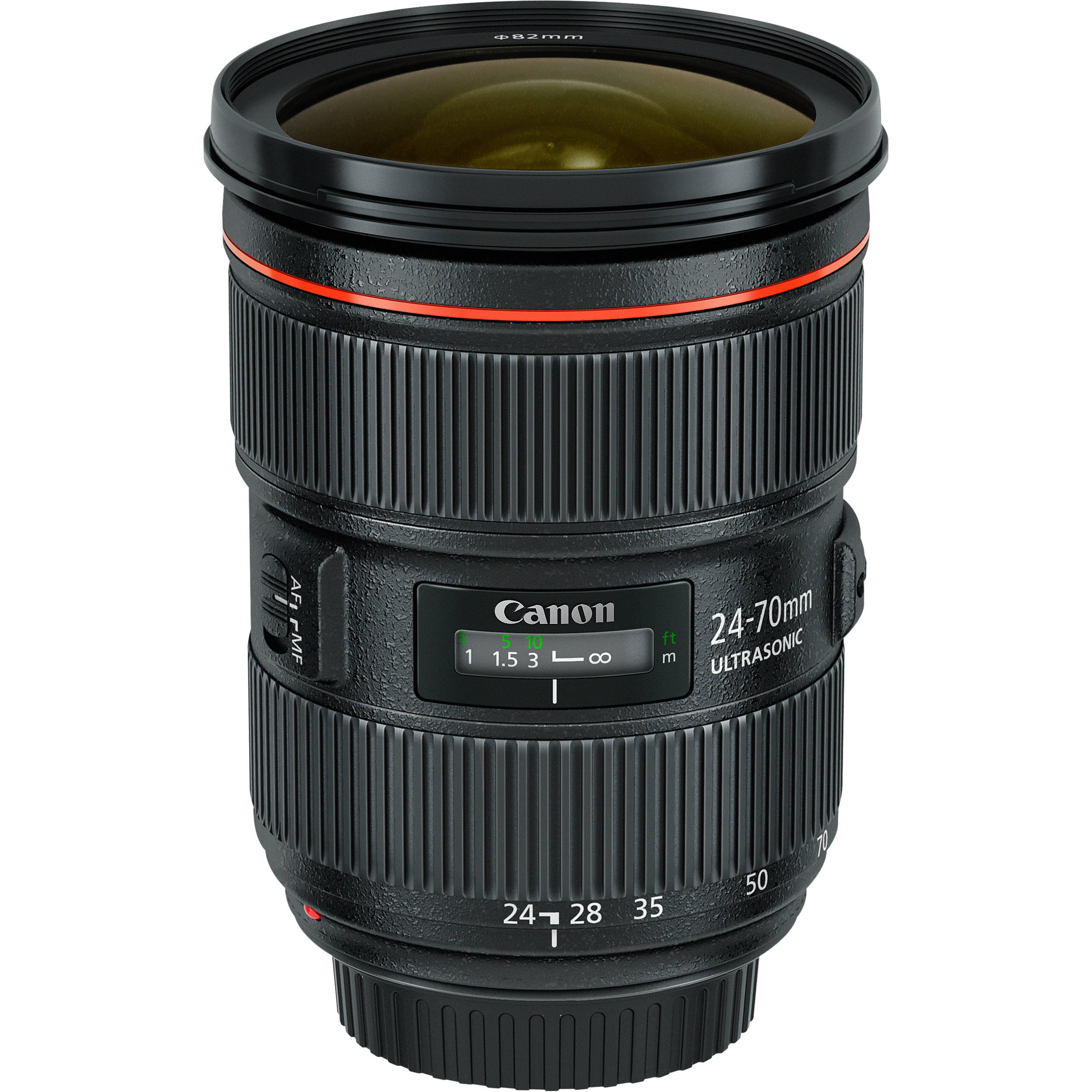Design and ergonomics
For many photographers, a zoom lens with a focal length of 24–70 mm is the main one. Because of their versatility, such zooms are called “regular” or “standard”. On a full-frame camera, they can be both a wide-angle for landscape photography and a portrait portrait. At the same time, the relatively low zoom ratio allows you to combine high aperture and image quality in one lens.
The picture was taken on a 50-megapixel Canon EOS 5DS R camera with a Canon EF 24-70mm f / 2.8L II USM lens. This bundle provides unprecedented high image quality.
Canon EOS 5DS R / Canon EF 24-70mm f / 2.8L II USM Settings: ISO 100, F4, 1/800 s
The heroes of our test today will be three lenses with a focal length of 24–70 mm from Canon. This is the old Canon EF 24-70mm f / 2.8 L USM , released back in 2002, as well as two 2012 models: the top Canon EF 24-70mm f / 2.8L II USM and less aperture, but at the same time stabilized Canon EF 24- 70mm f / 4L IS USM . Check how they differ in work and image quality?
Get Price Canon EF 24-70mm f / 2.8 L USM / Canon EF 24-70mm f / 2.8L II USM / Canon EF 24-70mm f / 4L IS USM
Here it is - the succession of generations in the L-series: for ten years, the key features of the design of lenses have not undergone any noticeable changes. The inscription fonts have changed a bit, a silver Canon logo has been added above the focus distance window and the plastic has become more rough to the touch. The tactile sensations of working with all three lenses are identical. The zoom rings move smoothly and not too tight. In an upright position, none of the lenses that came to our test, the “trunk” did not spontaneously extend, although two newer lenses are equipped in this case with the zoom lock lever in the folded state. By the way, about the zoom: if the last two models have the usual design for most zooms - short-focus position when folded, then the Canon EF 24-70mm f / 2.
As you already understood, during zooming all three lenses unfold, increasing in size. But during focusing, no external parts are moving.
Dimensions and weight are an important factor. For example, the Canon EF 24-70mm f / 2.8 L USM can be called huge, especially in the wide-angle position. Weight with both covers - 946 grams. Working with him while holding the camera with one hand is uncomfortable. He significantly outweighs the camera forward.
Canon EF 24-70mm f / 2.8 L USM
The updated version of the Canon EF 24-70mm f / 2.8L II USM is slightly more compact both in the folded and unfolded state. And the weight is less, only 848 grams with both covers. However, holding the camera with one hand with it is not an easy task.
Canon EF 24-70mm f / 2.8L II USM
Against the background of its counterparts, the Canon EF 24-70mm f / 4L IS USM looks much smaller. Weight is significantly less - 637 grams. Affects on a step lower aperture. Even with the front lens block extended, it practically does not outweigh the camera, providing a more comfortable balance.
Canon EF 24-70mm f / 4L IS USM
All three lenses are equipped with a rubber “skirt” on the mount. This is an externally visible element of dust and moisture protection. Of course, protective structural elements, various seals are inside the lenses. This is a hallmark of most L-Series models.
All three lenses have a rubber mount seal
Of the specific structural elements, I would like to mention the Macro switch on the Canon EF 24-70mm f / 4L IS USM. It allows you to translate the lens into macro mode and provide a shooting scale of 0.7 x, which for a non-specialized lens is a more than serious figure. We will write about this feature of this model.
All participants in our test are equipped with a USM autofocus drive. It was not possible to notice any difference in focusing speed between them. Focusing is carried out quickly and almost silently, with a slight rustling, noticeable only to the photographer in absolute silence.


